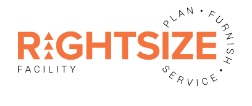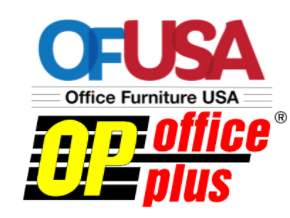How to organize your workspace for maximum productivity
Improving productivity in the workplace
It may come as no surprise that a disorganized and poorly designed office will affect your performance and productivity - and as a consequence your profitability. By contrast, a well organized and well structured workplace will improve the effectiveness of your workforce.
This article walks you through the key areas that require careful planning, and highlights the benefits that a well organized office configuration can bring to your business.
Seating configuration
When it comes to planning your seating configuration, the first step is to work out which teams and/or individuals need to be sitting near each other. A well thought through seating plan will help everyone collaborate and support better communication. Take a review of your existing seating plan, find out what works and ways you might mix and match everyone in the space.
De-clutter
Whether you are moving to a new office, or reconfiguring your existing space, it's important to sort through all your belongings and decide what items you are taking with you.
Don't assume that your existing office furniture will suit or even fit the new space, work with an Office Design Company to decide what items need replacing and what you are taking with you.
Get rid of any unwanted paperwork, redundant IT equipment and boxes. If your office is one big mess of papers and boxes it doesn't create a good impression, and can reduce the amount of useable square footage that you can use for valuable floor space.
Storage
Storage is an important factor when planning your workspace. You will need adequate storage for filing, books, letterhead and stationery. Archive as much paperwork and files as you can to free up and maximize the space.
Allocate Space
Have a space allocated for everything. The more organized your office is, the easier it will be to keep everything looking tidy and implement the necessary project processes that making your working life more efficient.
Break out Area
It's important to have an area for relaxation, chat or informal meetings within the space. Your staff will need somewhere to go to get away from their computer screens, brainstorm ideas or meet informally to discuss projects. It doesn't have to be a large area, but incorporating one into your space plan can make a difference to the look and purpose of your office. Now that you understand the key areas to plan an effective space plan, the next step is to create one.
To discover more about office design and space configuration, download the Tenant's Guide to Office Design.
Planning an office move? Go the office relocation planning resource center
-
Start Planning Your Office Move
Wherever you are in your office move process Help Moving Office has the information you need to plan your office move properly.
Start Planning -
Access The Resource Center
With over 15 guides, checklists, tools & calculators the Resource Center has everything you need to plan, organize & manage a successful office move.
See Resources -
Office Relocation Services Directory
Looking for the right companies for your office move? Connect with independently sourced and pre-qualified vendors that are experts in your local market.
The Directory
Latest Tips
-
Creating a Stylish Office with Second-Hand Conference Tables
In today's business world, creating a stylish and functional office space doesn't have to break the bank. One of the smartest and most sustainable choices you can make is to invest in budget office furniture, specifically second-hand conference tables. Not only do they provide a professional look and feel, but they also come at a fraction of the cost of new furniture. Here’s how you can transform your office space with second-hand conference tables and where to find the best deals
Read Article -
Embracing the Spirit of Connection: Workplace Trends and the Paris 2024 Olympics
As we anticipate the 2024 Paris Olympics, a celebration of unity, excellence, and the indomitable human spirit, it's fascinating to observe how these themes resonate with the evolving dynamics of today's workplace.
Read Article -
OFUSA Moving Services
Moving office furniture in Las Vegas requires prec...
Read Article






